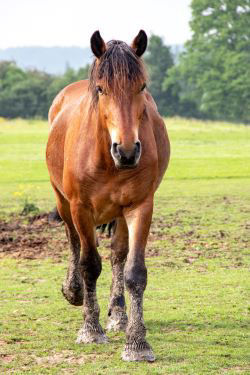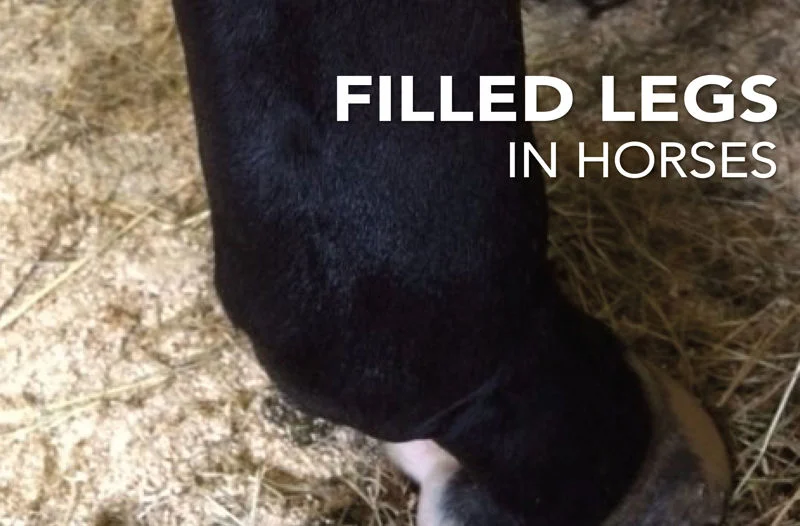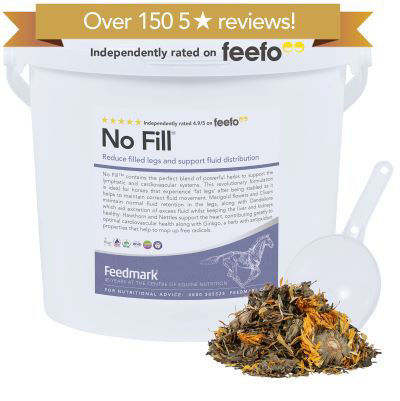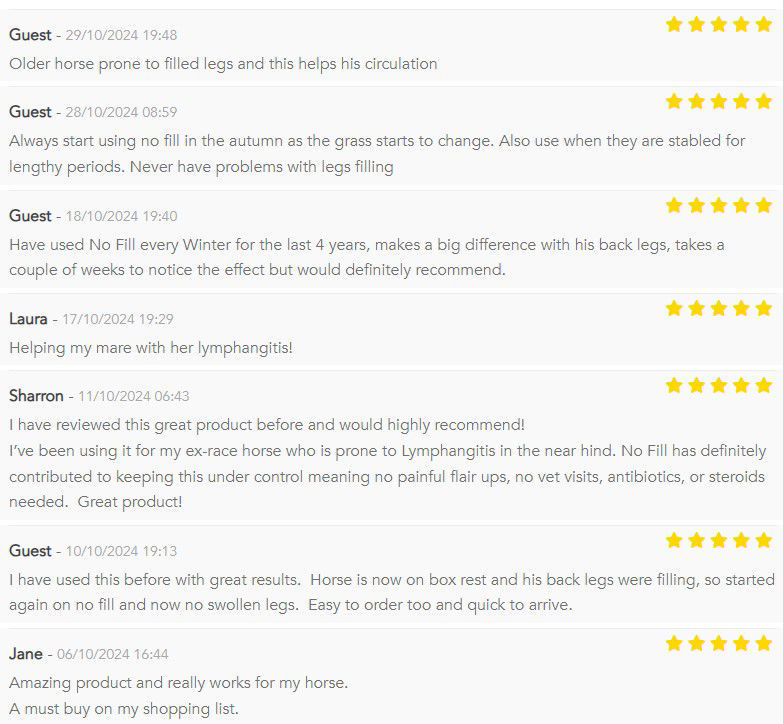Filled legs are a common ailment that is regularly seen among horses as we enter the winter months. Whilst this is a common occurrence, how worried do you need to be and what can you do to help reduce filled legs?
Filled legs is a description of the symptoms seen when fluid accumulates in the horse’s legs giving a swollen appearance. It is more frequently seen in the hindlegs and is the result of poor circulation when the horse is standing still. As management regimes change going into autumn in preparation for winter, many horses will spend extended periods of time in the stable or with less access to roam.

Horse's spend more time stabled at this time of year, increasing the occurance of filled legs.
What causes filled legs in horses?
The horse relies on movement to aid circulation in the legs as this is where they have relatively poor circulation. Filled legs are a type of oedema where an abnormal accumulation of bodily fluid occurs. This fluid is called interstitial fluid and is the fluid that surrounds the cells within the body. Movement aids circulation through the action of the feet hitting the ground which 'pumps' blood and lymphatic fluid up from the limbs. When standing, this process is less efficient, and fluid begins to leak out of the blood vessels instead of returning to the lymph. This process is also aided by muscular contractions; however, horses also do not have muscles in the lower limbs so when standing still there is not enough pressure to return the fluid back to where it should be.
For most horses, gentle exercise will reduce the appearance of filled legs quickly and help to move excess fluid away from the limbs. However, it is important to be aware of other signs that may require veterinary attention.

Movement aids circulation through the action of the feet hitting the ground.
How can you tell if it's filled legs in your horse or something worse?
Horses with filled legs are likely to show some signs of stiffness which resolves after movement as this reduces the swelling. However, it is important to be aware of the signs of other causes of filled legs such as infections. Look out for small cuts, heat in the legs, lameness or a temperature as this could indicate that the problem is more than just filled legs and will require a visit from your vet. Filled legs can also be a sign of underlying health conditions such as heart problems so if other signs of illness are present get your horse checked by your vet.
Filled legs usually affect pairs of legs so if just one leg is swollen, this is likely to be due to other reasons. Horses with filled legs will allow you to push against the swelling without it causing pain or discomfort. Any signs of pain are usually due to infection being present.
How to support a horse with filled legs
Some horses are more likely to suffer from filled legs due to their management regimes and this is not always avoidable. Supplementary support can be provided to help support the lymphatic and cardiovascular systems.
Feedmark's No Fill™ is a revolutionary herbal supplement that promotes fluid movement in the limbs via the lymphatic system. This supplement combines herbs that support a healthy lymphatic system with those that optimise the circulatory system, specially designed for horses who have to be stabled or stand in for periods of time, which can lead to ‘fat legs’.
Marigold flowers work synergistically with Clivers to promote a healthy lymphatic system. Together, these ingredients can help to maintain normal fluid retention in the legs, and Dandelions further help the lymphatic system by keeping the liver and kidneys healthy and promoting movement of excess fluid. Hawthorn is a plant traditionally used to support the heart and circulatory system. It contains Rutin, a powerful compound which helps to maintain flexible and strong capillaries and, along with Nettles, contributes greatly to cardiovascular health. Lastly, Ginkgo is an antioxidant herb that mops up free radicals and supports circulation by helping blood to remain at the correct consistency and maintaining small blood vessels and capillaries, so they keep clear and open, promoting healthy circulation.
Read more of the 150+ independent customer 5* reviews here>>














